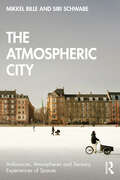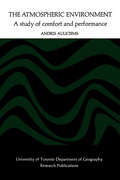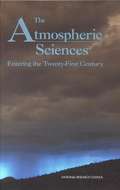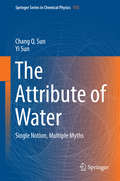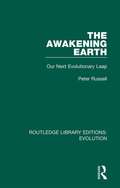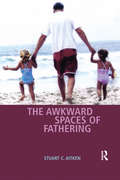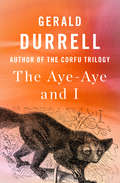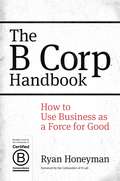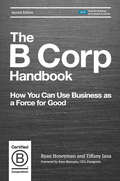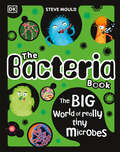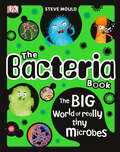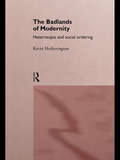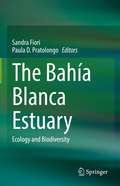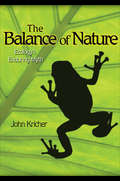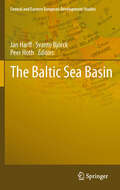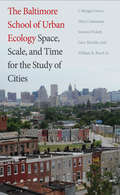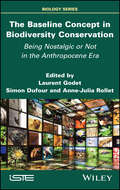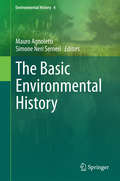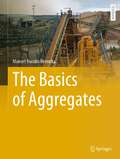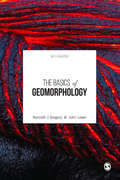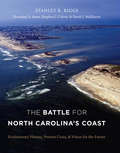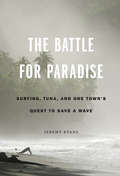- Table View
- List View
The Atmospheric City (Ambiances, Atmospheres and Sensory Experiences of Spaces)
by Mikkel Bille Siri SchwabeThe Atmospheric City explores how people make sense of the feelings they get in and of urban spaces. Based on ethnographic fieldwork of everyday life in Copenhagen, Oslo, and Stockholm, it focuses on the atmospheric power of people, places, and phenomena. While the predominant focus of current urban planning tends to rest on economic growth, sustainability, or offering housing, transport, and activities to an increasing number of city residents, this book offers a different take, based on recent discussions in the social sciences about how cities feel. It calls attention to the mundane ways in which urban dwellers adapt and adopt their surroundings. It argues that atmospheric cities are characterised by a fundamental porosity that affects how people relate to places. This highlights why some places are sought after while others are avoided. Through concrete examples of people being in and moving through the city, the book shows how people attune and are attuned by designed urban spaces, often at the margins of attention, when they find comfort in the familiar and seek out the unexpected. This book is aimed at researchers, postgraduates, and practitioners interested in urban design and how people make sense of the feelings it evokes. It will be of interest to those in the fields of urban studies, urban design, planning, architecture urban geography, cultural geography, cultural studies and anthropology.
The Atmospheric Environment: A Study of Comfort and Performance
by Andris AuliciemsIn this study energy-exchange processes and climatic influences are examined in relation to thermal comfort and work efficiency as exemplified in a schoolroom situation. The investigation tests fundamental hypotheses on meterotropisms and optimal thermal environments and demonstrates how daily variations within atmospheric environments are considerably more important than had been previously suspected. It also describes the experimental use of a variety of microclimatic instruments and thermal indices in conjunction with psychological tests of continuous mental performance. The Atmospheric Environment treats a complex problem from a broad multi-disciplinary standpoint and is of particular interest to climatologists, psychologists, teachers and educational administrators, heating and ventilating engineers, and to all concerned with environmental management.(Department of Geography Research Publications 8).
The Atmospheric Sciences Entering the Twenty-First Century
by Board on Atmospheric Sciences ClimateTechnology has propelled the atmospheric sciences from a fledgling discipline to a global enterprise. Findings in this field shape a broad spectrum of decisions--what to wear outdoors, whether aircraft should fly, how to deal with the issue of climate change, and more.This book presents a comprehensive assessment of the atmospheric sciences and offers a vision for the future and a range of recommendations for federal authorities, the scientific community, and education administrators.How does atmospheric science contribute to national well-being? In the context of this question, the panel identifies imperatives in scientific observation, recommends directions for modeling and forecasting research, and examines management issues, including the growing problem of weather data availability.Five subdisciplines--physics, chemistry, dynamics and weather forecasting, upper atmosphere and near-earth space physics, climate and climate change--and their status as the science enters the twenty-first century are examined in detail, including recommendations for research. This readable book will be of interest to public-sector policy framers and private-sector decisionmakers as well as researchers, educators, and students in the atmospheric sciences.
The Attribute of Water
by Chang Q Sun Yi SunThis book features the latest advances and future trends in water science and technology. It also discusses the scientific popularization and quantitative resolution of a variety of mysterious properties of water and ice from the perspective of hydrogen-bond cooperativity in response to stimuli such as chemical contamination, electrification, magnetification, mechanical compression, molecular undercoordination, and thermal excitation. Anomalies include the floating of ice, the Hofmeister effect in solutions, regelation of ice, slipperiness of ice, water's tough skin, the Mpemba paradox, and the floating bridge. It also addresses the superfluidity of microchannels, hydrogen bond potentials, nanodroplet and bubble thermodynamics, quasisolidity and supersolidity, controlling superhydrophobicity-superhydrophilicity transition, and high-pressure ice formation. The target audience for this book includes students, senior scholars, engineers and practitioners in the area of physical chemistry, biology, as well as aqueous and colloid solutions.
The Augmented Spherical Wave Method
by Volker EyertThe Augmented Spherical Wave (ASW) method is one of the most powerful approaches to handle the requirements of finite basis sets in DFT calculations. It is particularly suited for the calculation of the electronic, magnetic, and optical properties of solid-state materials. Recent developments allow application, in addition, to the elastic properties and phonon spectra. Due to the localized nature of the ASW basis set these properties can be easily interpreted in terms of atomic-like orbitals. The book addresses all those who want to learn about methods for electronic structure calculations and the ASW method in particular. This new edition has been thoroughly revised and extended. In particular, a chapter on the new, both very efficient and accurate spherical-wave based full potential ASW method has been added.
The Avocado Debate (Changing Planet)
by Honor May EldridgeWhether smashed on toast or hailed as a superfood, the avocado has taken the world by storm, but what are the environmental and social impacts of this trendy fruit? This book does not seek to demonise the avocado and its many enthusiasts. Instead, it will illuminate consumers on the often unseen impacts of foods. A staple of cafes, restaurants, homes, and social media channels, demand for the avocado has grown exponentially over the past thirty years. From an everyday crop in South and Central America to a global phenomenon, this drastic change in demand has many consequences for people and the planet. As demand grows, so does the need for more land, with land clearances threatening habitats and biodiversity. As production grows, so does global distribution and the impacts that air and sea travel have on the environment. The shift from a local to a global product disturbs the local food system, raising serious questions around food sovereignty and food justice and the importance of establishing an agricultural system that is both environmentally and socially just. While focusing here on the avocado, this book allows readers to gain a better understanding of the food system as a whole. In doing so, it empowers us all to think carefully and critically about the environmental and ethical implications of our food choices more broadly. We shouldn’t feel guilty about eating avocados, we should simply understand the impact of doing so. This book is essential reading for all who are interested in learning more about the food system, sustainable diets, and the relationship between farming and the environment.
The Awakening Earth: Our Next Evolutionary Leap (Routledge Library Editions: Evolution #11)
by Peter RussellOriginally published in 1982 The Awakening Earth explores the idea of the Earth as a collective, self-regulatory living organism, and considers in this context, the function of the human race. The book provides an exploration of humanity’s potential and explores the possibility of mankind’s evolutionary future. Drawing on the work of physicists, psychologists, philosophers and mystics, the book argues that humanity is on the verge of another evolutionary leap and explores evolution in the context of spiritual growth, arguing that widespread inner awakenings could lead to a more analogous society, functioning as a single social super-organism, much in the way cells in a body function as a biological organism.
The Awkward Spaces of Fathering
by Stuart C. AitkenSocietal notions of fathers have evolved from the distant breadwinner through genial dad and masculine role model to today's equal co-parent. This book seeks to explore the spaces and movements of men-as-fathers. Weaving together theories of space, sexuality and political identity with the stories of fathers from a range of sources, including popular culture, it discusses the way in which geographies of space can disconnect and disempower fathers, while societal notions marginalize and disassociate them from raising children. It explores how fathering identities are shaped by family and community spaces and aims to move the definition of 'fathering' beyond its definition in opposition to 'mothering'. In doing so, it provides insights into the contradictory nature of father's lives and argues that, rather than moving away from the traditional notions of masculine roles, that the emotional work of fathering in itself is an heroic act.
The Aye-Aye and I: A Rescue Journey To Save One Of The World's Most Intriguing Creatures From Extinction
by Gerald Durrell"First-rate entertainment": The author of the Corfu Trilogy recounts his expedition to Madagascar and search for the elusive, endangered aye-aye (Publishers Weekly). In 1990, Gerald Durrell; his wife, Lee; and a television crew embarked on a rescue mission to one of the most interesting places in the world: the island of Madagascar. It was there that they hoped to record and capture the endangered aye-aye, the world's largest nocturnal primate. Recognizable by its big eyes and long fingers, the strange, rare aye-aye was an animal of incredible fascination for Durrell, one he felt compelled to conserve as its habitat was taken away by deforestation. In this passionate memoir, Durrell's funny, vibrant voice shines as he describes the magical landscape of Madagascar, the exotic animals that inhabit it, and the challenges of his expedition to preserve an important part of our ever-changing world. This ebook features an illustrated biography of Gerald Durrell including rare photos from the author's estate.
The B Corp Handbook
by Bart Houlahan Jay Coen Gilbert Andrew Kassoy Ryan HoneymanJoin a Growing movement: Learn how you can join a fast-growing global movement to redefine success in business--led by well-known icons like Patagonia and Ben & Jerry's as well as disruptive upstarts like Warby Parker and Etsy--recently covered by the New York Times, the Economist, the Wall Street Journal, Entrepreneur, and Inc. Build a better business: Drawing on best practices from 100+ B Corps, this book shows that using business as a force for good can help distinguish your company in a crowded market, attract and retain the best employees, and increase customer trust, loyalty, and evangelism for your brand. More than 1,000 companies from 80 industries and 30 countries are leading a global movement to redefine success in business. They're called B Corporations--B Corps for short--and these businesses create high-quality jobs, help build stronger communities, and restore the environment, all while generating solid financial returns. Author and B Corp owner Ryan Honeyman worked closely with over 100 B Corp CEOs and senior executives to share their tips, advice, and best-practice ideas for how to build a better business and how to meet the rigorous standards for--and enjoy the benefits of--B Corp certification. This book makes the business case for improving your social and environmental performance and offers a step-by-step "quick start guide" on how your company can join an innovative and rapidly expanding community of businesses that want to make money and make a difference.
The B Corp Handbook, Second Edition: How You Can Use Business as a Force for Good
by Ryan Honeyman Tiffany Jana"This book shows how using business as a force for good, not just pursuing short-term profits, can be better for consumers, employees, local communities, the environment, and your company's long-term bottom line."—Tony Hsieh, New York Times bestselling author of Delivering Happiness and CEO, Zappos.com, Inc. B Corps are a global movement of more than 2,700 companies in 60 countries—like Patagonia, Ben & Jerry's, Kickstarter, Danone North America, and Eileen Fisher—that are using the power of business as a force for good. B Corps have been certified to have met rigorous standards of social and environmental performance, accountability, and transparency. This book is the authoritative guide to the what, why, and how of B Corp certification.Coauthors Ryan Honeyman and Dr. Tiffany Jana spoke with the leaders of over 200 B Corps from around the world to get their insights on becoming a Certified B Corp, improving their social and environmental performance, and building a more inclusive economy. The second edition has been completely revised and updated to include a much stronger focus on diversity, equity, and inclusion (DEI). These changes are important because DEI can no longer be a side conversation—it must be a core value for any company that aspires to make money and make a difference.While this book is framed around the B Corp movement, any company, regardless of size, industry, or location, can use the tools contained here to learn how to build a better business. As the authors vividly demonstrate, using business as a force for good can help you attract and retain the best talent, distinguish your company in a crowded market, and increase trust in your brand.
The Bacteria Book: Gross Germs, Vile Viruses and Funky Fungi (The Science Book Series)
by Steve MouldIn this fun, fact-packed science book for kids, young readers will discover the bacteria, viruses, and other germs and microbes that keep our bodies and our world running, as well as how and when they can be harmful and the precautions we can take to prevent them from becoming so.Meet a glowing squid, traveling fungus spores, and much more. The Bacteria Book walks the line between "ew, gross!" and "oh, cool!," exploring why we need bacteria and introducing readers to its microbial mates-viruses, fungi, algae, archaea, and protozoa.The Bacteria Book is a fun and informative introduction to a STEM subject that brings kids up-close to the big world of tiny science. With remarkable photography, kooky character illustrations, and lots of fun facts, this book uses real-life examples of microbiology in action to show how tiny microbes affect us in big ways.
The Bacteria Book: The Big World of Really Tiny Microbes (The Science Book Series)
by Steve MouldIn this fun, fact-packed science book for kids, young readers will discover the bacteria, viruses, and other germs and microbes that keep our bodies and our world running, as well as how and when they can be harmful and the precautions we can take to prevent them from becoming so. Meet a glowing squid, traveling fungus spores, and much more. The Bacteria Book walks the line between "ew, gross!" and "oh, cool!," exploring why we need bacteria and introducing readers to its microbial mates—viruses, fungi, algae, archaea, and protozoa. The Bacteria Book is a fun and informative introduction to a STEM subject that brings kids up-close to the big world of tiny science. With remarkable photography, kooky character illustrations, and lots of fun facts, this book uses real-life examples of microbiology in action to show how tiny microbes affect us in big ways.
The Badlands of Modernity: Heterotopia and Social Ordering (International Library of Sociology)
by Kevin HetheringtonThe Badlands of Modernity offers a wide ranging and original interpretation of modernity as it emerged during the eighteenth century through an analysis of some of the most important social spaces. Drawing on Foucault's analysis of heterotopia, or spaces of alternate ordering, the book argues that modernity originates through an interplay between ideas of utopia and heterotopia and heterotopic spatial practice. The Palais Royal during the French Revolution, the masonic lodge and in its relationship to civil society and the public sphere and the early factories of the Industrial Revolution are all seen as heterotopia in which modern social ordering is developed. Rather than seeing modernity as being defined by a social order, the book argues that we need to take account of the processes and the ambiguous spaces in which they emerge, if we are to understand the character of modern societies. The book uses these historical examples to analyse contemporary questions about modernity and postmodernity, the character of social order and the significance of marginal space in relation to issues of order, transgression and resistance. It will be important reading for sociologists, geographers and social historians as well as anyone who has an interest in modern societies.
The Bahía Blanca Estuary: Ecology and Biodiversity
by Sandra M. Fiori Paula D. PratolongoThe Bahía Blanca Estuary is one of the largest coastal systems in Atlantic South America. This mesotidal estuary, situated in a sharp transition between humid subtropical and semiarid climates, has a unique combination of large interannual climatic variations. The estuarine area encompasses roughly 2300 square kilometers and is composed of wide expanses of intertidal flats, salt marshes, and emerged islands, which create intricate landscape patterns. Natural environments in the estuary sustain a high concentration of marine and terrestrial species, including endemic, threatened, and endangered fish and shorebirds. Puerto Cuatreros, in the inner zone of the estuary, hosts a permanent marine research station, whose records span more than 30 years of biophysical variables, and represent one of the largest time series of ecological data in South America. Beyond its ecological relevance, the Bahía Blanca Estuary is under increasing anthropogenic pressure from large urban settlements, industrial developments and harbors, raising the question of how to balance conservation and development. The Bahía Blanca Estuary: Ecology and Biodiversity offers a comprehensive review of life in the ecosystems of the estuary. The book is divided into five major sections, the first of which provides a description of the regional setting and covers key aspects of estuarine dynamics. The three following sections are dedicated to different habitat types and, within each section, the chapters are organized around major functional groups from pelagic and benthic environments. The fifth and final section covers issues related to management and conservation. Overall, the book provides essential and up-to-date reference material on the biodiversity and ecosystem processes of the Bahía Blanca Estuary, and will appeal to a broad international audience.
The Balance of Nature and Human Impact
by Klaus RohdeIt is clear that nature is undergoing rapid changes as a result of human activities such as industry, agriculture, travel, fisheries and urbanisation. What effects do these activities have? Are they disturbing equilibria in ecological populations and communities, thus upsetting the balance of nature, or are they enhancing naturally occurring disequilibria, perhaps with even worse consequences? It is often argued that large-scale fluctuations in climate and sea-levels have occurred over and over again in the geological past, long before human activities could possibly have had any impact, and that human effects are very small compared to those that occur naturally. Should we conclude that human activity cannot significantly affect the environment, or are these naturally occurring fluctuations actually being dangerously enhanced by humans? This book examines these questions, first by providing evidence for equilibrium and non-equilibrium conditions in relatively undisturbed ecosystems, and second by examining human-induced effects.
The Balance of Nature: Ecology's Enduring Myth
by John C. KricherThe idea of a balance of nature has been a dominant part of Western philosophy since before Aristotle, and it persists in the public imagination and even among some ecologists today. In this lively and thought-provoking book, John Kricher demonstrates that nature in fact is not in balance, nor has it ever been at any stage in Earth's history. He explains how and why this notion of a natural world in balance has endured for so long, and he shows why, in these times of extraordinary human influence on the planet's ecosystems, it is critical that we accept and understand that evolution is a fact of life, and that ecology is far more dynamic than we ever imagined. The Balance of Nature traces the fascinating history of the science of ecology and evolutionary biology, from the discipline's early innovators to the advent of Darwin and evolution, to the brilliant and inquisitive scientific minds of today. Blending insights and entertaining stories from his own remarkable life in science, Kricher reveals how evolution is a powerful engine that drives ecological change, how nature is constantly in flux and, in effect, quite naturally out of balance--and how notions to the contrary are misguided and ultimately hazardous to us all. The Balance of Nature forcefully argues that an understanding of the dynamic nature of ecology and evolution is essential to formulating policies of environmental ethics to guide humanity toward a more responsible stewardship of our planet's ecosystems.
The Baltic Sea Basin
by Jan Harff Peer Hoth Svante BjörckThis book reports about the results of a Special Symposium "The Baltic Sea Basin", held on August 11, 2008, within the frame of the 33rd IGC at Oslo, Norway in order to foster the understanding of the Baltic Basin as a unit in terms of genesis, structure, ongoing processes and utilization. It is the first time that in a joint publication, scientists from different disciplines give a comprehensive overview about the Baltic Sea basin in such a general sense. The book will be used not only by students and scientist but also by engineers and decision makers from industry and politics. Summarizing the state of the art in the investigation of the Baltic Sea Basin, but also in the resource utilisation of the basin the book will enhance the development of new monitoring strategies and technical device design including satellite observation methods, the establishment of international research laboratories, innovative topics for interdisciplinary research projects, etc.
The Baltimore School of Urban Ecology
by Steward T. Pickett Mary Cadenasso J. Morgan Grove William R. Burch Laura A. Ogden Gary E. MachlisThe first "urban century" in history has arrived: a majority of the world's population now resides in cities and their surrounding suburbs. Urban expansion marches on, and the planning and design of future cities requires attention to such diverse issues as human migration, public health, economic restructuring, water supply, climate and sea-level change, and much more. This important book draws on two decades of pioneering social and ecological studies in Baltimore to propose a new way to think about cities and their social, political, and ecological complexity that will apply in many different parts of the world. Readers will gain fresh perspectives on how to study, build, and manage cities in innovative and sustainable ways.
The Baseline Concept in Biodiversity Conservation: Being Nostalgic or Not in the Anthropocene Era
by Laurent Godet Simon Dufour Anne-Julia RolletThe Anthropocene era has been marked by such significant human pressure that it has led to the sixth mass extinction. The Baseline Concept in Biodiversity Conservation interprets human domination of the Earth as the process of gradual landscape change, the execution of which is neither linear nor homogeneous. This book is structured around three key questions: Where and when did everything go wrong? How do we define baseline states for biodiversity conservation strategies? How are reference states mobilized in a concrete way through case studies? Today, biodiversity conservation faces a dilemma that this book sheds light on: return to states less modified by humans than today but in a world that has changed significantly; or, let the nature of tomorrow express itself where it still can but without a road map.
The Basic Environmental History
by Mauro Agnoletti Simone Neri SerneriThis book is an introductory instrument to the main themes of environmental history, illustrating its development over time, methodological implications, results achieved and those still under discussion. But the overriding aspiration is to show that the doubts, methods and knowledge elaborated by environmental history have a heuristic value that is far from negligible precisely in its attitude to the most consolidated major historiography. For this reason, this book gives an overview of environmental history as it is an essential component of the basic knowledge of global history. At the same time, it introduces specific aspects which are useful both for anyone wanting to deepen his/her studies of environmental historiography and for those interested in one of the many disciplinary areas - from rural history to urban history, from the history of technology to the history of public health, etc. with which environmental history develops a dialogue.
The Basics of Aggregates (Springer Textbooks in Earth Sciences, Geography and Environment)
by Manuel Bustillo RevueltaAggregates are among the most common natural resource used in everyday's life, having enhanced life quality. They are essential for construction, being utilized in nearly all residential, commercial, and industrial building construction and most public work projects such as roads, highways and bridges, railroad beds, dams, airports, tunnels, and many others. In the future, the rebuilding of deteriorated roads, highways, bridges, airports, seaports, and private and public buildings will require vast amounts of aggregate. Although it is almost impracticable to know the total amount of aggregates extracted every year globally, it is roughly estimated that annual aggregate production totals about 25 billion tons. Both developed and developing nations require extensive use of aggregates.The book "The Basics of Aggregates" covers all topics related to utilizing this type of material, including the properties of aggregates, types of deposits, geological occurrence, exploration methodologies and extraction methods, and processing techniques as well as their main applications and the importance of recycled aggregates. It serves as a basic text on aggregates for natural sciences and provides information about the main aggregate materials comprehensively with extensive number of illustrations and equips students to handle the mining cycle of aggregates. It enhances the understanding of the different aggregate types, being interdisciplinary and practice-oriented. This textbook addresses bachelor and master students of geology and general earth science as well as students of engineering and environmental sciences. It is written for undergraduate and graduate students, researches and professionals alike.
The Basics of Geomorphology: Key Concepts
by Kenneth J. Gregory John Lewin"This book, written by two leading geomorphologists, provides a very welcome first attempt to explain the major concepts in a concise and accessible way." - Andrew Goudie, University of Oxford "I can think of no better guides than Professors Ken Gregory and John Lewin to lead the reader through the conceptual basis of this exciting science." - Victor R. Baker, University of Arizona "A very readable and informative introduction to the discipline for senior undergraduates, postgraduates and researchers approaching the subject from other areas of science." - Angela Gurnell, Queen Mary University of London "Gregory and Lewin have managed the difficult but important task of distilling a new set of 'basics' that both broadens and complements traditional ideas... Time will tell, but this book may well mark a turning point in the way students and scientists alike perceive Earth surface processes and landforms." - Jonathan Phillips, University of Kentucky This student focused book provides a detailed description and analysis of the key concepts, ideas, and hypotheses that inform geomorphology. Kenneth Gregory and John Lewin explain the basics of landform science in 20 concepts, each the subject of a substantive, cross-referenced entry. They use the idea of the 'geomorphic system' to organise entries in four sections, with extensive web resources provided for each: System Contexts: The Systems Approach / Uniformitarianism / Landform / Form, Process and Materials / Equilibrium / Complexity and Non Linear Dynamical Systems System Functioning: Cycles and cascades / Force-Resistance / Geomorphic work / Process Form Models System Adjustments: Timescales / Forcings / Change Trajectories / Inheritance and Sensitivity / Anthropocene Drivers for the Future: Geomorphic Hazards / Geomorphic Engineering / Design and Prediction Aligned with the teaching literature, this innovative text provides a fully-functioning learning environment for study, revision, and even self-directed research for both undergraduate and postgraduate students of geomorphology.
The Battle for North Carolina's Coast: Evolutionary History, Present Crisis, and Vision for the Future
by Stanley R. RiggsThe North Carolina barrier islands, a 325-mile-long string of narrow sand islands that forms the coast of North Carolina, are one of the most beloved areas to live and visit in the United States. However, extensive barrier island segments and their associated wetlands are in jeopardy. In The Battle for North Carolina's Coast, four experts on coastal dynamics examine issues that threaten this state treasure. According to the authors, the North Carolina barrier islands are not permanent. Rather, they are highly mobile piles of sand that are impacted by sea-level rise and major storms and hurricanes. Our present development and management policies for these changing islands are in direct conflict with their natural dynamics. Revealing the urgency of the environmental and economic problems facing coastal North Carolina, this essential book offers a hopeful vision for the coast's future if we are willing to adapt to the barriers' ongoing and natural processes. This will require a radical change in our thinking about development and new approaches to the way we visit and use the coast. Ultimately, we cannot afford to lose these unique and valuable islands of opportunity. This book is an urgent call to protect our coastal resources and preserve our coastal economy.
The Battle for Paradise: Surfing, Tuna, and One Town's Quest to Save a Wave
by Jeremy EvansCORRECTION:Regarding the book, The Battle for Paradise by Jeremy Evans, the following correction has been made on page 163 in paragraph three (3) to wit:“Weston once worked in concert with government officials in a pre-planned sting operation, complete with marked bills: Weston, whose role in the operation involved paying a bribe to the Golfito mayor for a concession and then documenting the bribe as a way to expose the mayor as a corrupt government official, was a former cocaine dealer, according to Dan, and someone who illegally acquired possession of his sawmill property.”Pavones, a town located on the southern tip of Costa Rica, is a haven for surfers, expatriates, and fishermen seeking a place to start over. Located on the Golfo Dulce (Sweet Gulf), a marine sanctuary and one of the few tropical fjords in the world, Pavones is home to a legendary surf break and a cottage fishing industry. In 2004 a multinational company received approval to install the world’s first yellowfin tuna farm near the mouth of the Golfo Dulce. The tuna farm as planned would pollute the area, endanger sea turtles, affect the existing fish population, and threaten the world-class wave. A lawsuit was filed just in time, and the project was successfully stalled. Thus began an unlikely alliance of local surfers, fishermen, and global environmental groups to save a wave and one of the most biodiverse places on the planet. In The Battle for Paradise, Jeremy Evans travels to Pavones to uncover the story of how this ragtag group stood up to a multinational company and how a shadowy figure from the town’s violent past became an unlikely hero. In this harrowing but ultimately inspiring story, Evans focuses in turn on a colorful cast of characters with an unyielding love for the ocean and surfing, a company’s unscrupulous efforts to expand profits, and a government that nearly sold out the perfect wave.
